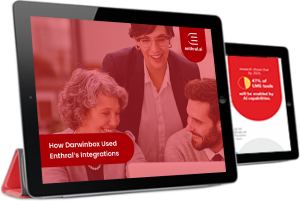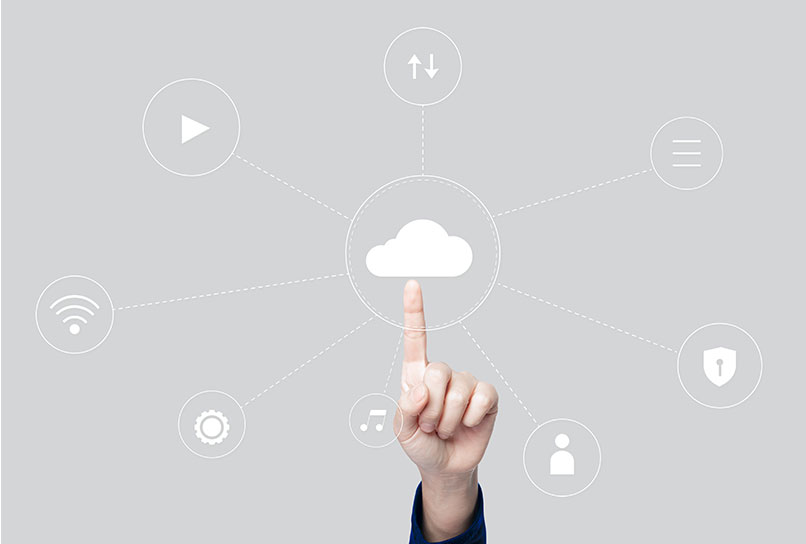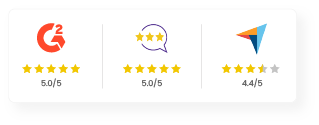LMS Integration: Creating a Unified Experience for Workplace Learning

When you invest in a learning management system (LMS), you open doors to myriad positive business outcomes. But for the learning system to be fully effective, LMS integrations play a very important role.
What is LMS Integration
LMS integration connects your LMS with other software tools in your company’s existing tech stack to create a cohesive and unified environment for training and development.
With LMS integrations, your learners no longer have to juggle between multiple platforms, deal with numerous logins, or manage scattered resources. Once integrated, the systems work together seamlessly, making the learning experience easy, intuitive, and impactful.
Why LMS Integration is Important
The primary goal of any L&D initiative is to enhance employee skills and performance.
Now, imagine a scenario where your learners are eager to dive into a new training course. However, they first need to log into the LMS, then find the right course content stored on another platform, and then check if all data syncs correctly. This disjointed experience not only frustrates them, but also limits the effectiveness of your training program.
LMS integrations address issues like these by connecting your LMS to the rest of your learning ecosystem to create a smooth learning experience. Whether it is integrating with your Human Resource Management System (HRMS) platforms for updated employee data, connecting with video conferencing tools for live training sessions, or syncing content from various providers, LMS integration helps create a holistic learning environment.
Key Benefits of LMS Integration
1. Enhanced Learning Experience
Your LMS is the central hub where all your training happens. Integrations allow you to pull in content from various sources, so your learners don’t have to hop from one system to another. Whether it’s online courses, live sessions, or self-paced learning materials, everything is right there which means your learners get a comprehensive experience that keeps them engaged.
2. Streamlined Workflows
Integrating your LMS with your HRMS, Customer Relationship Management (CRM), and other business tools automates mundane tasks. Some systems offer Application Programming Interfaces (APIs) that enable custom integrations tailored to an organization’s specific needs. With RESTful APIs, LMS platforms can facilitate both one-way and two-way integrations, allowing data to flow seamlessly between systems. This flexibility ensures that the LMS can be adapted to suit unique business requirements, enhancing the overall learning experience.
3. Simplified Access & Security
If your learners need to remember too many passwords, they are bound to feel bogged down. SSO (Single Sign-On) and Lightweight Directory Access Protocol (LDAP) authentication integrations make it easier by allowing them to log in once and gain access to all integrated systems. This not only provides a secure experience but also removes one of the biggest barriers to learning—multiple logins and credentials. This is especially crucial in a remote work environment, where seamless access to learning tools is a must.
4. Data Synchronization
LMS integrations enable the smooth exchange of data between systems, giving a more holistic view of learning metrics and outcomes. For instance, bi-directional data flow with HRMS platforms allows for more accurate tracking of training progress, skill development, and compliance so that learning initiatives are tailored to meet organizational objectives.
5. Enhanced Collaboration
Virtual training is more effective when it feels interactive and connected. LMS integrations with video conferencing tools bring your virtual classrooms to life by allowing instructors and learners to communicate and collaborate in real-time. You can record sessions, schedule meetings, or host webinars—these tools turn remote learning into an engaging experience that mimics the in-person classroom.

How Darwinbox Used Enthral’s Integrations
- Human Resource Management System Integration
- Badging & Certification Platform Integration
- Mail Server Integration
Must-Have LMS Integrations
Content Integrations
Content integrations allow you to import and manage learning materials from external, third-party providers directly within your LMS. This means learners can access a vast library of courses, videos, and resources without switching between platforms. This is particularly beneficial for organizations that use multiple content providers, as it simplifies content delivery and management.
HRMS Integrations
Your employees are constantly evolving, and your training should evolve with them. HRMS integrations ensure your LMS is always updated with the latest employee data so that it is easier to personalize learning paths and track progress. From onboarding to upskilling, your training is always aligned with your workforce’s needs with integrations.
Virtual Classroom Integrations
Virtual classroom integrations allow your LMS to seamlessly connect with video conferencing tools, in turn, enhancing real-time collaboration between your instructors and learners. This integration ensures that remote training sessions are as interactive and effective as in-person meetings, making it easier to conduct live classes, webinars, and discussions all within the same platform.
CRM Integrations
Customer interactions often have to be dynamic, and your training should reflect that. CRM integrations keep your LMS synchronized with your Customer Relationship Management system, so you can tailor training based on real-time customer insights and needs. This integration ensures that your team stays sharp and informed so that customer support and aligning training is enhanced with evolving client demands.
Parting Thoughts
Creating a unified learning experience through LMS integration is necessary for modern workplace learning. It brings together the best of your existing tech landscape, enhances security and delivers an easy learning journey for employees. A well-integrated LMS doesn’t just support learning—it takes it forward, helping monitor everything in real time to make adjustments as required.











